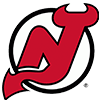Part 1:Why You Should Try An Auction Draft (Free!!)
Part 2:How Auction Values Are Calculated (Free!!)
Part 3:Head-to-Head Rankings and Auction Values (Free!!)
Part 4:9-Category Rotisserie Rankings and Auction Values (Subscriber Content)
Part 5:8-Category Rotisserie Rankings and Auction Values (Subscriber Content)
Part 6:Points Leagues Rankings and Auction Values (Subscriber Content)
For me, the most enjoyable part about playing fantasy basketball has always been the draft. I was hooked during my very first draft, even though it only lasted one round.
The draft took place in an NBA.com chat room when I was 11 years old. My excitement grew as I watched the other teams make their selections. When it was my turn, I drafted my favorite player, Reggie Miller. I was beyond thrilled that my favorite player was now on my very own fantasy team.
Unfortunately, the excitement soon fizzled as most people logged out of the chat room soon after their first pick. I did the same, it was past my bedtime, and my parents had already told me to quit tying up our phone line with the dial up internet connection.
At 11 years old, it was one of the funnest things I'd ever done. Luckily for me, I had many more chances to draft my favorite players, as my older brothers and I soon started playing in our own fantasy leagues.
Trying to figure out which players I wanted on my fantasy team and then trying to figure out how to actually get those players onto my team during the draft was somehow more fun than anything else in fantasy, even winning the league.
When I first heard about auction drafts during college my reaction was one of complete disinterest. Snake drafts were the best part about fantasy basketball for me, and I had no interest in doing something different. That disinterest turned into disdain as I grew tired of hearing about how great auctions are compared to snake drafts.
Eventually, however, curiosity got the best of me (college is an experimental time for all of us I guess), and I decided to try an auction mock draft with some friends. Within the first two minutes, we all looked up from our computers with the thought - THIS IS AWESOME!
For me, it felt like we had been watching television in black and white for years, and then someone suddenly turned the color on. Bill Simmons described his preference for auctions in a similar manner.
I'd spent over 10 years of my life believing that nothing in fantasy sports could be better than a snake draft, and in only a few seconds, I became the world's biggest supporter of auction drafts. I'd like to share with you the two main reasons for my change of heart:
Two Reasons Why I Love Auctions
1. You Can Have Any Player You Want (as long as you stay within your budget)
During an auction, you have the opportunity to be involved in the bidding on of every single player, and you have the option to spend your money on whomever you want. If you want three players who would regularly go in the first round of a snake draft, you have the option to draft all three players as long as you stay within your auction budget. If you aren't really interested in any of the first rounders but would like to stack your entire team with players who would normally be drafted in the third round of a snake draft, you can do that in an auction draft.
In auctions, gone are the days where you miss out on a player you really wanted simply because the team picking in front of you drafted that player before you ever had the choice.
Even in the case where someone else in the league wants a player just a little more than you do, an auction allows you the option to drive up the price of that player to ensure that your opponent has to pay a steep price for his player, which brings its own form of satisfaction.
2. Auctions Are More Fair
Snake drafts seem fair. If you pick first in one round, then you also have to pick last in the next round. What could be more fair than that?
History and statistical analysis suggests that teams who draft at the top of the first round have a decided advantage over teams who draft at the bottom of the first round, despite the reversal of draft order during even rounds of snake drafts.
The table below shows the fantasy value of each draft spot in a 10-team league snake draft based on last season's player values.
(This means the draft slot values are calculated by distributing players as a snake draft would. For example, the team picking first gets the most valuable player, the 20th most value player, the 21st most value player and so on. The team picking second gets the 2nd, 19th, and 22nd most valuable players, etc.)
Snake Draft | Draft Value |
Pick 1 | $234 |
Pick 2 | $211 |
Pick 3 | $207 |
Pick 4 | $197 |
Pick 5 | $196 |
Pick 6 | $195 |
Pick 7 | $191 |
Pick 8 | $194 |
Pick 9 | $188 |
Pick 10 | $189 |
The team with the first pick in your league last year received a draft slot that turned out to be about 24 percent more valuable than the draft slot of the team who selected last. While it's true that this is only the expected value of the draft slot, and the team with the first pick could easily have lost this advantage by making some ill advised selections, the advantage is significant nonetheless.
The draft slots at the top of a draft are so valuable because the players at the top of the first round are so valuable in fantasy basketball. Last season, the top player in an eight-category league was Kevin Durant, who was worth a whopping $95. The next most valuable player was Stephen Curry at $73, and the 10th most valuable player was Anthony Davis at $44. That means, in a snake draft, if you picked Davis at the end of the first round, your first pick was worth only about half as much as the team with the first-overall pick, a gap in value of $51. In the second round, the 11th most valuable player was worth $42, while the 20th ranked player was worth $33, meaning there was only a $9 gap from the top to bottom of the second round.
Auctions have no assigned draft slots, and therefore no built in advantages for any owner. Every owner has the same amount of money and access to every player in the league.
Are you interested in trying a fantasy auction? Do you just want to see how it works? Both ESPN and Yahoo offer free mock auctions, starting at all times of the day. If you don't want to try it out alone I'd be happy to jump into the mock auction with you. Contact me on twitter @MarcFRoberts, and we'll find a time to make it work.
If you'd like to read Part 2 of this series How Auction Values Are Calculated, click the link.
All articles in this series are free, but if you'd like to see the rest of our content and tools, you can claim a free 10 days at rotowire.com/free, or sign up for a subscription at the link.























